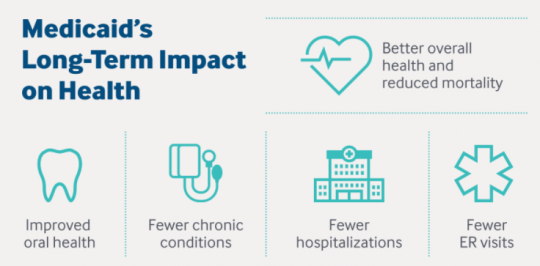 New Report from the Commonwealth Fund Shares Long-term Benefits of Medicaid for Children
New Report from the Commonwealth Fund Shares Long-term Benefits of Medicaid for Children
January 8, 2020
By Tracy Nájera, Executive Director and Kendal Glandorf, College Intern
Across the country, children and families are facing unimaginable challenges on a daily basis as a result of the dual crisis of the pandemic and subsequent economic downturn. These challenges have plunged over 8 million people in the United States into poverty. In fact, just over 30,000 Ohioans filed for unemployment in December, an indication that we have not yet turned the corner on this economic crisis. For many throughout the Buckeye State, this means that children and families are facing housing instability, food insecurity, delayed treatment of health conditions, and the stress and uncertainty that comes with each of these. In Ohio alone, the U.S. Census Bureau’s Household Pulse surveys show indications on a weekly basis of how these challenges are impacting people lives. There are increases in depression, loss of learning, and limited access to remote learning, working, and a multitude of other daily stressors that can plunge individuals and whole families into feelings of hopelessness and despair. During these times, a lifeline for so many families is their access to health care and services. In December, 2020, the Commonwealth Fund released an issue brief sharing long-term benefits of providing health coverage to children and their pregnant mothers and how these benefits persist in a positive way throughout life.
 Today, as many states, including Ohio, are facing revenue contractions and contemplating areas for added investments, protections, and potential budget cuts, the return on investments for positive health cannot be under-estimated.
Today, as many states, including Ohio, are facing revenue contractions and contemplating areas for added investments, protections, and potential budget cuts, the return on investments for positive health cannot be under-estimated.
Half of all births in Ohio are covered through Medicaid and ensuring a health pregnancy, birth, and childhood yields incalculable benefits for all of society. Medicaid coverage means that a child has access to oral health, maintenance of chronic conditions such as diabetes and asthma, fewer potential hospitalizations and visits to the emergency room. The implications of not providing proper care or delayed treatment can result in more costly visits to the emergency room and suffering for children who can suffer from health complications. Each additional year of Medicaid childhood eligibility is also associated with a decline in mortality rates among young adults.
An additional benefit of Medicaid coverage of children and pregnant women relates to the lifelong positive outcomes throughout life and financial security in adulthood. Coverage produces considerable financial benefits for not only individuals but also society as a whole. Good health is tied to greater likelihood of high school graduation, college enrollments which results in higher earnings in adulthood. According to the report, increased Medicaid eligibility for those with incomes in the 10th percentile was associated with a greater likelihood of being in a higher income percentile later in life.
 One policy solution that will address state budget shortfalls and prevent harmful Medicaid cuts is to provide a temporary increase in federal Medicaid funding and link it to economy recovery indicators such as unemployment rates in states.
One policy solution that will address state budget shortfalls and prevent harmful Medicaid cuts is to provide a temporary increase in federal Medicaid funding and link it to economy recovery indicators such as unemployment rates in states.
Medicaid cuts affecting children and pregnant women will result in long-term harm by leading to poorer health and economic outcomes for low-income children later in life. Given the positive short and long term benefits of health coverage and of Medicaid, it only makes sense that states use all the tools at its disposal to extend and protect Medicaid coverage for children and families – especially during the current pandemic and economic downturn. It will not only support the short and long-term health of individuals but will also pay it forward in terms the economic recovery for states.
Read the full report here.

